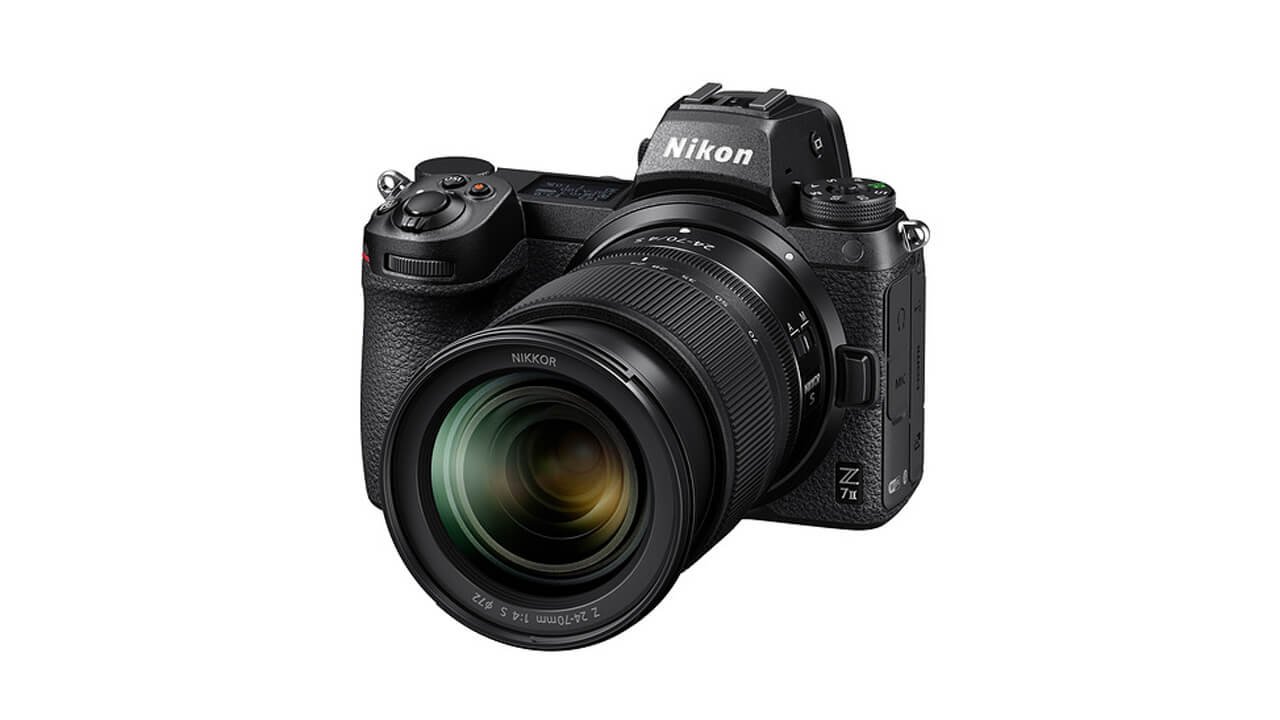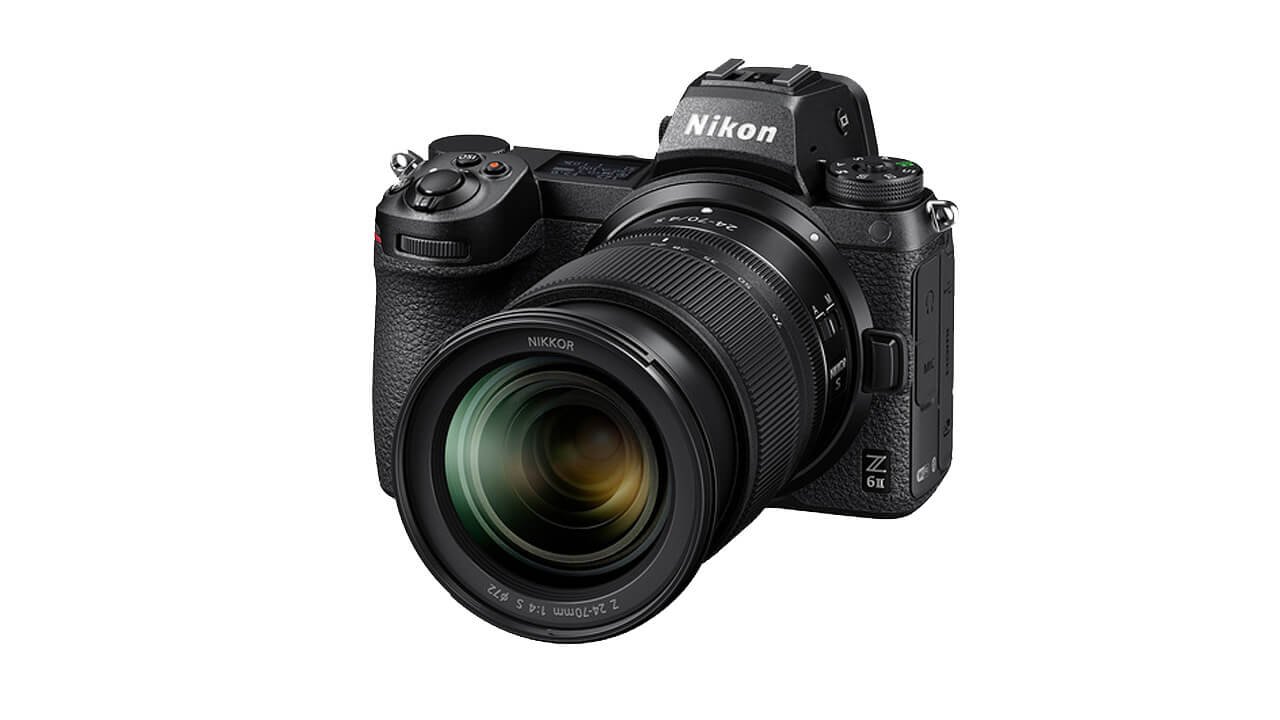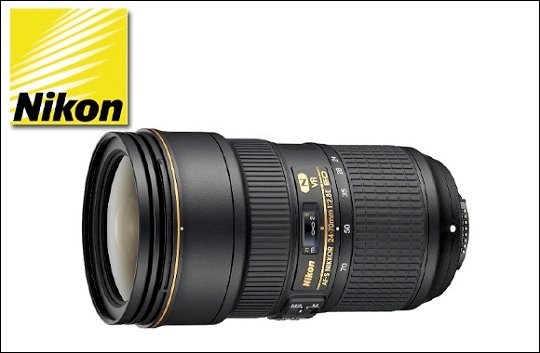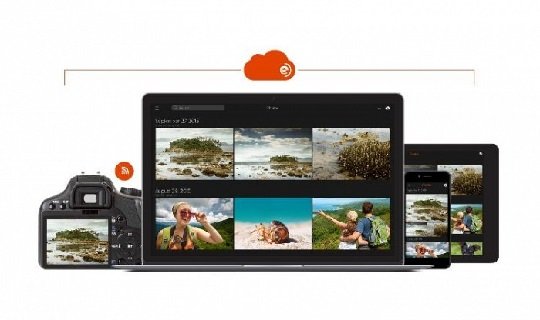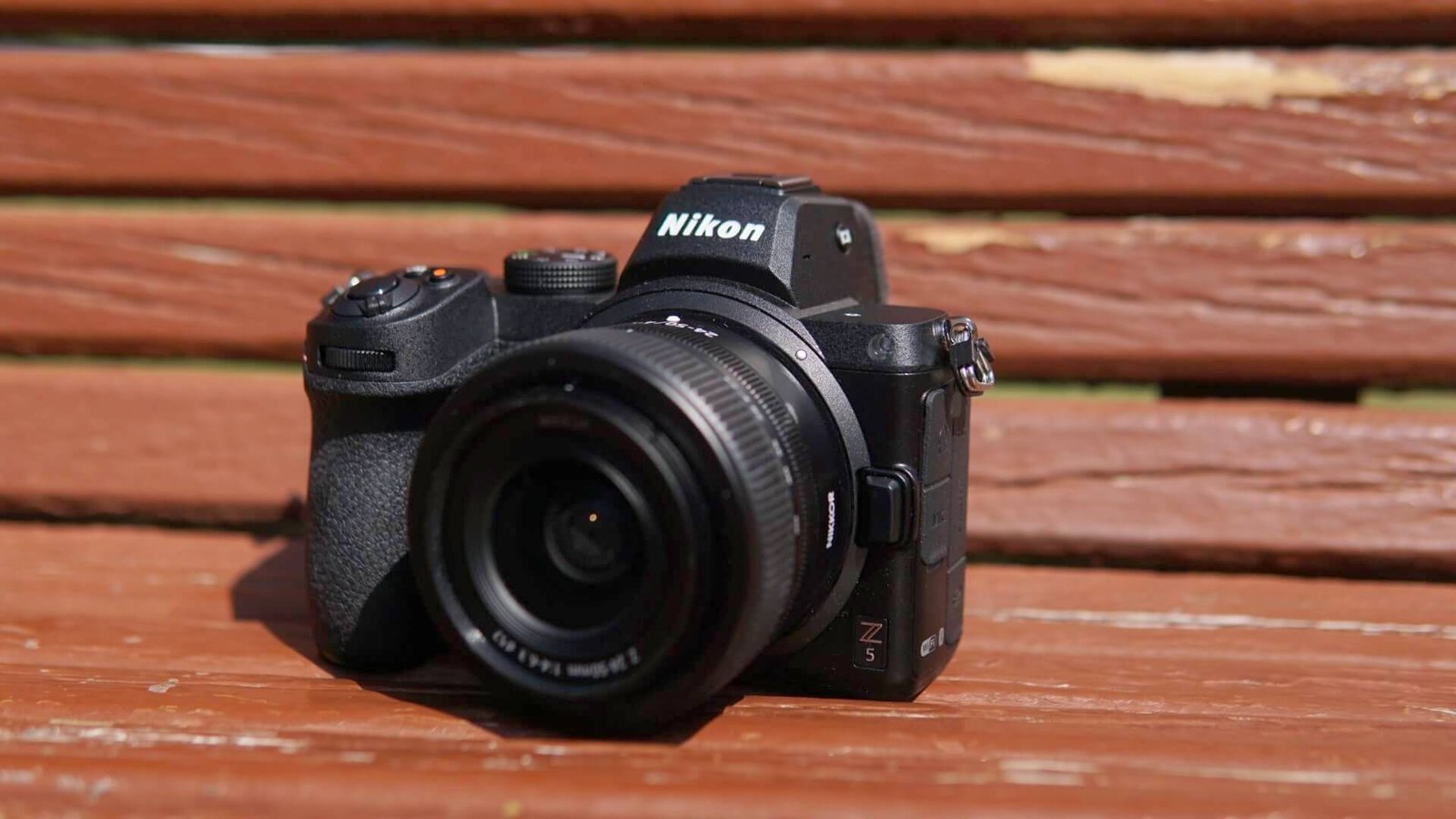Nikon has officially unveiled its second iterations of the Nikon Z6 and Z7 series of cameras. The new cameras are simply called the Nikon Z6 II and Nikon Z7 II, and features important updates such as the introduction of 4K 60p video recording, dual-cards slots, and more.
The new cameras feature the same image sensors found on the previous models. The Nikon Z6 II packs the same 24.5MP BSI full-frame image sensor as the original Z6. The same goes for the Nikon Z7 II, packing the 45.7MP full-frame BSI image sensor like the one found on the Nikon Z7. The new cameras also feature the same EVF resolutions and the same main displays as their predecessor models. Both the Nikon Z6 II and the Nikon Z7 II weighs 705g for just the body. While both the cameras are physically almost similar to their previous counterparts, most of the new changes are done with respect to inner specifications and shooting capability.
The new Z6 II and the Z7 II now come with the new and improved Dual EXPEED 6 image processors, allowing the new full-frame shooters to capture 4K videos at 60fps. Nikon mentions that the 4K 60p capability will roll out a software update for the Z6 II by February 2021. It should be noted that the previous model wasn’t capable of 4K 60p video recording. The new Nikon Z6 II is also now capable of firing up to 14fps continuous bursts. Nikon has increased the size of the buffer by 3.5x times to compensate for the high-burst shooting mode. On the other hand. the Nikon Z7 II is capable of 10fps continuous bursts. On the contrary, the previous Nikon Z6 and the Nikon Z7 are capable of 12fps and 9fps, respectively. That said, Nikon has promised that the autofocus has improved with expanded eye and animal autofocus capability on the new models.
The new cameras also bring improved autofocus capability for low-light situations. It looks like all the major brands are competing with the likes of Sony when it comes to high-speed full-frame mirrorless cameras. Speaking of which, the Nikon Z6 II features a total of 273 on-sensor hybrid contrast/phase autofocus points, while the Nikon Z7 II also has a hybrid contrast/phase detection autofocus system with a total of 493 points and covering 90% of the image sensor. We aren’t sure why Nikon did not provide the same number of AF points for the Nikon Z6 II, as the camera has an impressive 14fps continuous burst mode. An odd combination to say the least.
While the previous Nikon Z6 and Z7 cameras were criticized for having just one memory card slot that accepts only XQD/CFexpress cards, Nikon fixes that issue by integrating a second memory card slot. Both the new Nikon Z6 II and Z7 II allows data to be written simultaneously on both the XQD/CFexpress card and a UHS-II SD card. This was a much-needed update as professionals require dual-slots to make backup copies of their shots. Nikon also introduces a new battery grip called the MBN-11, featuring its own control wheel and shutter button for easier access. The battery grip can hold a pair of the new EN-EL16c batteries and can be charged with a USB Type-C port. Both the new cameras now come with the improved EN-EL16c batteries.
The Nikon Z6 II has an ISO performance that ranges from 50 to 204800. The Nikon Z7 II can deliver ISO performances from 32 ISO to 102400 ISO. Both the new cameras feature the 5-axis image stabilization and up to 5-stops of compensation, according to CIPA ratings. The new cameras also come with a 3.2-inch 170-degree tilting TFT touchscreen display with 2100k dot screen resolution. The new cameras also offer several connectivity options such as a USB Type-C port, a Type C HDMI connector, a built-in accessory terminal, and audio input/output 3.5mm jacks.
The new Nikon Z6 II and Z7 II is said to release in November 2020 and December 2020, respectively. However, local availability may differ and we will be sure to update you regarding it. The Nikon Z7 II is priced at 3000 dollars (Approx.11,100 AED) for the body-only model and 3600 dollars (Approx. 13,300 AED) for a kit lens combo with the Nikkor Z 24-70 F4 lens. The Nikon Z6 II is priced at 2000 dollars (Approx. 7400 AED) for the body-only model and the lens-combo for 2600 dollars (Approx. 9600 AED). The new MB-N11 battery pack is priced at 400 dollars. (Approx. 1500 AED)
PRESS RELEASE
THE NEXT CHAPTER OF Z IS HERE: NIKON DELIVERS MORE OF EVERYTHING WITH THE NEW Z 7II AND Z 6II FULL-FRAME MIRRORLESS CAMERAS
The High-Resolution, High-Performance Z 7II, and the Versatile, Multimedia Powerhouse Z 6II Offer More Innovation, Power, Speed and Precision to Step into a New Era of Creative Freedom
MELVILLE, NY (October 14, 2020) – Today, Nikon Inc. unveiled the next chapter of the Z series with the arrival of two new full-frame mirrorless cameras that significantly improve upon the previous generation by adding more power, more features, and more of what users want. The ultra-high-resolution Z 7II is for those with an eye for impeccable details, offering professionals and advanced photographers a powerful tool to capture immense resolution in every shot. For dynamic creators who need a device as versatile as they are, the Z 6II balances powerful performance and an expert-level multimedia feature set to bring any creative vision to life. Together, the Z 7II and Z 6II, along with new accessories, expand the Z series into a more robust mirrorless platform, incorporating many performances and design upgrades while maintaining the most popular features of their award-winning predecessors.
“As we evolve the Nikon Z series into the future, we continue to strengthen the platform, keeping the needs of our customers at the center of every new innovation and added feature,” said Jay Vannatter, Executive Vice President, Nikon Inc. “These are the cameras that many have been waiting for from Nikon. The new Z 7II and Z 6II demonstrate our commitment to listening to customer feedback, while also establishing the new standard for performance, quality, and versatility for every type of creator, photographer or filmmaker.”
The Nikon Z Mount – The Most Light Means the Best Images
The Nikon Z mount is larger than any other full-frame mount, letting in significantly more light for the best possible image quality. The wider mount also allows for radically new concepts in optical design, giving lens designers the flexibility to create NIKKOR Z lenses with more edge-to-edge sharpness than ever thought possible. These new cameras expand the possibilities of the superior Z mount with performance upgrades designed to improve the quality, workflow, and shooting experience for Nikon Z series users.
New Features and Upgrades: Customer-Focused Innovation Drives Creativity
- Dual EXPEED 6 Processors for Twice the Power: At the heart of the new Z 7II and Z 6II is the implementation of two EXPEED 6 image processors, turbocharging performance to improve processing speed and increasing burst capability for stills — all while increasing power efficiency.
- Built for Confidence, Built for Creators: The cameras retain robust weather sealing, user-focused ergonomics, and an intuitive interface– distinctions that Nikon users have come to rely on. The new models also offer improvements such as dual memory card slots, with one CFexpress (type B)/XQD slot and one SD card slot (UHS-II), for maximum versatility and peace of mind. Users will also benefit from more power and comfortable vertical shooting with the addition of the optional new MB-N11 battery pack with a vertical grip.
- Enhanced Focus System: With an updated, feature-rich autofocus system, the Z 7II and Z 6II quickly acquire focus and track subjects throughout the frame. For more precise autofocusing, Eye and Face-Detection AF is now available in the Wide-Area AF (L) mode, which works to avoid focusing on distracting elements by isolating selected portions of an image. Additionally, both models have an improved low-light AF detection range that is capable of acquiring subjects in challenging lighting.
- Advanced Video Capabilities: Expanding the boundaries of 4K UHD video, the Z 7II, and Z 6II enhance video output with an increased frame rate of 4K (UHD) 60p, plus Eye-Detection AF mode when recording video. While currently available in the Z 7II, the 4K 60p option is planned to be available in a free firmware upgrade for the Z 6II in February 2021. As a result of pro user feedback, the models also allow users to reverse the focus ring orientation on the fly, benefitting those who are used to manual focusing using traditional cine lenses on set. For added flexibility in post-production, 10-bit N-Log and HDR (HLG)1 output offers more detail, dynamic range, and contrast in captured footage, while the optional 12-bit ProRes RAW upgrade2 delivers greater creative control for professionals and advanced videographers.
Nikon Z 7II: Absolute Immersive Masterpiece
The Z 7II promises high-resolution stills and video for discerning users who need ultimate performance to achieve exceptional image quality in every shot. A powerful upgrade to the Nikon Z 7, the Z 7II is the ideal camera for capturing highly detailed portraits, landscapes, weddings, events, and commercial photography when there is no compromise on image quality.
- The Z 7II features a 45.7-megapixel backside-illuminated (BSI) CMOS sensor to help capture intense detail, ultra-shallow depth of field and clarity that overwhelms. The exceptionally clean native ISO range from ISO 64 to 25,600 offers the functional freedom to shoot at wide apertures in bright light or in-studio with minimal noise.
- With up to 10 fps maximum shooting speed at full resolution in Continuous H (extended)3, the Z 7II can handle fast burst rates with more than triple (3.3x)4 the buffer capacity of the Z 7 (in 12-bit lossless compressed RAW).
- The Z 7II’s 493 on-sensor phase-detect autofocus points cover 90 percent of the frame, quickly and accurately acquiring subjects, even at its far edges. The Z 7II is capable of acquiring focus in half the light (as low as -3 EV5), making it a reliable tool for low-light scenes such as weddings and indoor events.
Nikon Z 6II: True Multimedia Powerhouse
The Z 6II is the most versatile Z series camera yet, balancing speed, power, low-light ability, and advanced video features for dynamic creators who need pro-level performance and reliability.
- Building on the vast pro-caliber video capabilities of the Z 6, the Z 6II is capable of recording 4K UHD video quality with full pixel readout, demonstrating the advantages of mirrorless technology. The camera is capable of a variety of frame rates, including 4K UHD 60p6 with full pixel readout, which is planned to be available in February 2021 via a firmware update. It is also capable of 4K 30p, as well as Full HD 120p for slow motion.
o Built with videographers in mind, the Z 6II’s AF speed and tracking sensitivity is adjustable to meet creative needs, while the focus ring is also reversible. Useful indicators for focus peaking, zebra stripes and timecodes help capture the best possible footage in-camera and simplify workflow.
o For both models, 10-bit output to an external recorder with N-Log is possible as well as the capture of new HDR (HLG) video and output in 12-bit ProRes RAW with the optional upgrade. To upgrade customers, additional support will also be included for Blackmagic RAW when using the Blackmagic Design Video Assist 12G HDR recorder. This upgrade will also be provided for existing customers who have already purchased a ProRes RAW upgrade for the Nikon Z 6 or Z 77.
o The Z 6II and Z 7II are the first Nikon cameras to support Eye-Detection AF and Animal-Detection AF with video recording, enabling continuous focus on the eyes of humans, dogs, and cats. - The Z 6II features a 24.5-megapixel BSI CMOS sensor for crisp stills and video capture with impressive detail, ultra-shallow depth of field, and impressive low light performance. To confidently shoot in challenging light, the camera has an impressive ISO range from ISO 100–51,200, expandable up to ISO 204,800 equivalent.
- Thanks to the addition of dual EXPEED 6 Processors, the Z 6II boasts a fast 14 fps3 continuous shooting speed, providing quick performance for capturing action, with more than 3.5x the buffer capacity of the Z 64.
- The Z 6II’s enhanced AF system features 273 on-sensor phase-detect autofocus points for easy subject acquisition and tracking throughout the frame, including at the edges. Capable of focusing in half the light (down to -4.5 EV5), the Z 6II easily acquires focus in extremely low light scenarios, making it an ideal option for capturing nightscapes and events.
The Nikon Experience: Reliability & Workflow
Both the Z 7II and Z 6II adopt the Z series’ durable Magnesium Alloy build and extensive weather-sealed design for all-around protection in rugged environments. Both models focus on improved workflow with intuitive features and controls that enhance the creative process.
- The Z 6II and Z 7II enable convenient iMenu access for autofocus modes such as the new Wide-Area AF (L) mode for people or animals, with built-in Eye and Face-Detect autofocus, allowing users to quickly switch between controls while shooting.
- USB power delivery can be enabled while the cameras are in use, drawing power from the USB source first, to preserve camera battery8 or charging while the camera is turned off (when using the EN-EL15b or EN-EL15c battery).
- The Z 6II and Z 7II also include in-camera exposure choices for up to 900 seconds for capturing super slow-shutter nighttime cityscapes and astrophotography.
- Both the Z 6II and Z 7II are compatible with the Nikon Webcam Utility software beta, ensuring seamless webcam functionality for all occasions. When using this function with a USB-C cable, power can be supplied to the camera to power it while using it as a webcam, making turnkey webcam functionality as easy as plugging in a USB-C cable.
- In addition to its seamless file transfer and remote camera control, the Nikon SnapBridge app can be used to streamline the firmware update process by wirelessly sending the latest firmware file directly to the Z 7II or Z 6II for updating, no card reader or computer necessary.
- Portions of the information display can be hidden with still-image shooting and video recording, allowing an unobstructed view of the scene.
- In-camera vibration reduction (VR) provides camera-shake compensation equivalent to 5-stops9.
A Rapidly Expanding Ecosystem
Nikon is committed to expanding the NIKKOR Z lens lineup to complement the exceptional power of these latest mirrorless cameras, with 16 NIKKOR Z lenses currently available, including the recently announced NIKKOR Z 50mm f/1.2 S and 14-24mm f/2.8 S. The lineup will expand to include a total of 24 innovative optics by the end of 2021, providing Z series users with the tools to achieve the highest level of optical excellence.
The ecosystem is also expanding with more accessories, including the addition of the new MB-N11 Power Battery Pack with vertical grip for the Z 6II and Z 7II. This new grip features convenient external controls for additional manual operation and customization, along with more comfortable portrait orientation shooting. While the battery life is extended up to 1.9x10 (CIPA standard), the battery grip also includes a hot-swappable chamber, granting users the ability to remove or replace one battery while shooting for uninterrupted power – a true benefit for content creation. The vertical grip also adds a secondary USB-C port for standalone charging and simultaneous communication with other devices.
Additionally, Nikon has announced new wireless transceivers for remote triggering and radio-controlled lighting, the WR-R11a and WR-R11b. The new wireless transceiver units use radio frequencies to communicate and are designed for users who need minimal release lag when shooting wirelessly, or those that use one or more remote flashes (AWL). The user can control additional remote cameras simultaneously using the WR-T10 remote, or via a main camera equipped with the WR-R11a/b. The WR-R11a uses a 10-pin connector, while the WR-R11b connects through the accessory terminal that can be found on Z series mirrorless cameras and select DSLRs. The units can also trigger Nikon radio-controlled flash units, such as the popular SB-5000 Speedlight, without the need for an additional receiver unit. Engineered with a new hinged design, the WR-R11a increases durability when attached to a camera.


